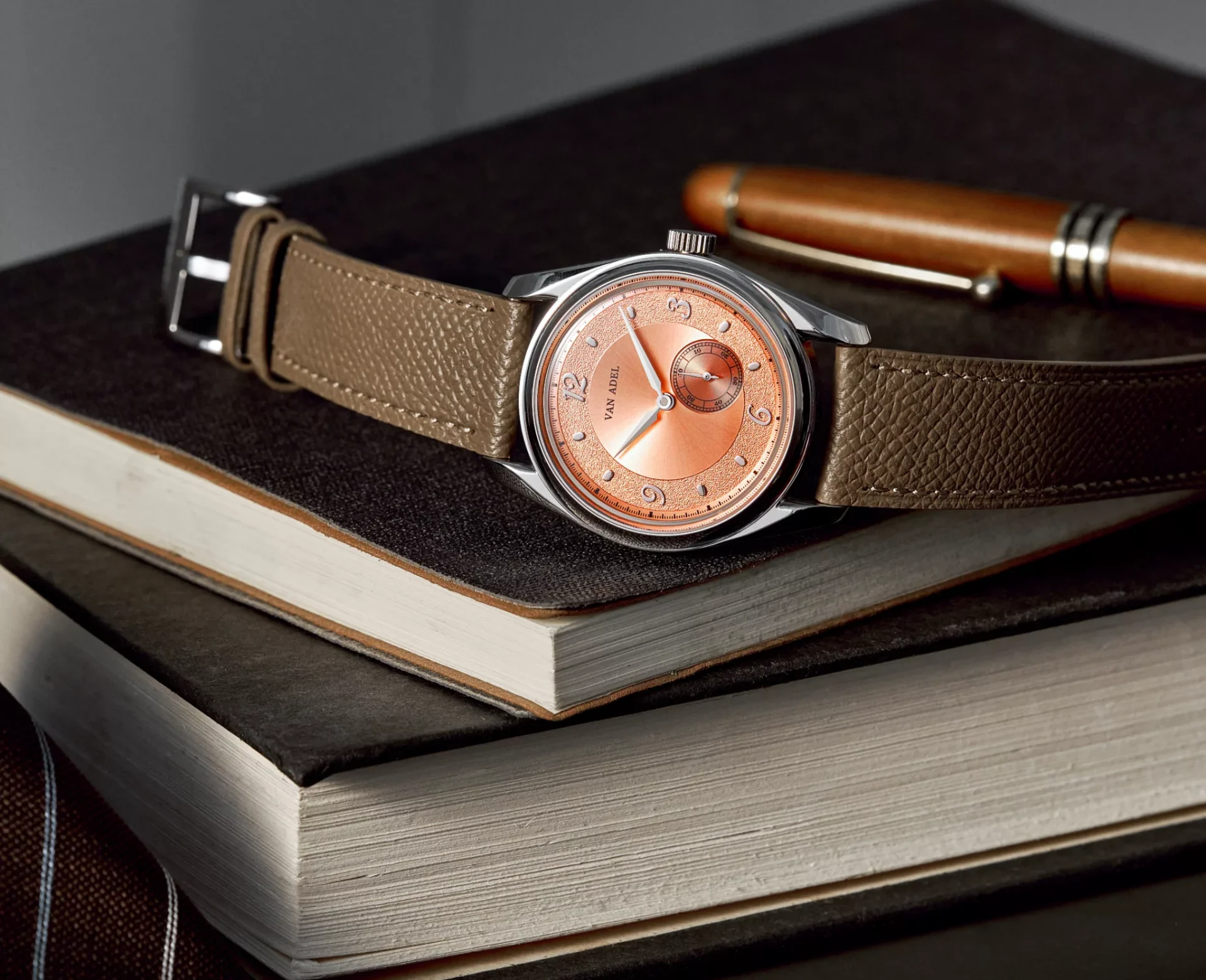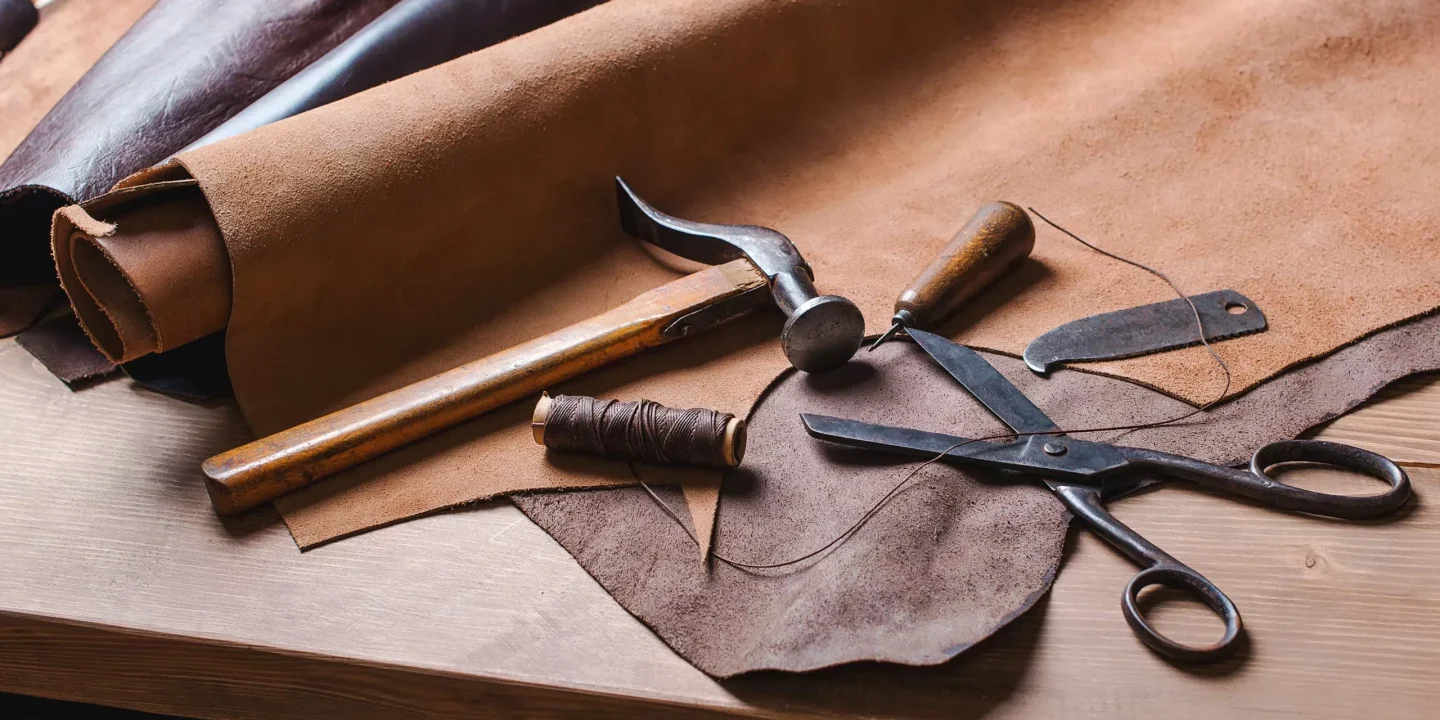The Importance of a Quality Strap & how to maintain it
- craftsmanship, leather, leather straps, premium leather, premium quality, straps

A quality strap isn’t only a functional component but an expression of style, and meticulous craftsmanship. These often overlooked yet crucial companions to our timepieces play a vital role in reflecting personal style and enhancing durability. From the finesse of leather textures to the modern allure of innovative materials, every strap embodies a unique blend of artistry and functionality.
Let’s delve into this topic, as we’ll explore how these elements intertwine, culminating in the perfect union of tradition and contemporary flair that adorns our wrists, accentuating the essence of each passing moment.
Focusing on the importance of quality, where form meets function, completing our design philosophy.
Fine Leather
The selection of refined leather types defines the pinnacle of elegance and style in the world of watches. These leather types, carefully curated for their unique characteristics, signify a commitment to timeless craftsmanship and embody the essence of quiet luxury style.
Types of leather
- Saffiano, known for its distinctive cross-hatch pattern and enduring resistance to scratches, represents a blend of timeless sophistication and unparalleled durability.
- Nubuck, with its delicate yet plush surface created from top-grain leather, boasts a luxurious touch that ages gracefully over time, adding an understated allure to your timepiece.
- Suede, renowned for its soft, textured finish crafted from the underside of the leather, exudes a subtle charm that effortlessly complements both casual and formal occasions, infusing a touch of refined elegance into your daily ensemble.


Recycled Faux Leather
Recycled faux leather emerges as a pioneering force, seamlessly blending style with sustainability. This innovative material represents a remarkable step towards reducing environmental impact by repurposing discarded leather scraps and other recycled components. By breathing new life into existing resources, recycled faux leather not only exudes a contemporary charm but also embodies a profound commitment to eco-conscious practices.
This versatile material caters to the discerning consumer seeking style and environmental responsibility. The utilization of repurposed materials doesn’t compromise the durability and visual allure that faux leather offers. Instead, it amplifies the appeal of a material that already resonates with those valuing affordability and versatility. This sustainable alternative not only reduces waste but also contributes to the larger goal of fostering a circular economy within the fashion industry.
PU Leather
PU leather, also known as polyurethane leather, has gained popularity for its balance of style and practicality. Created by treating a base material with a polyurethane coating, it offers a glossy finish reminiscent of genuine leather, catering to those seeking affordability and adaptability without compromising on aesthetics. Its budget-friendly nature allows for a broad spectrum of colors, textures, and finishes, making it a versatile choice for creative customization.
Despite its resilience against fading and easy maintenance, it may not match the durability and aging characteristics of genuine leather, and its manufacturing process involving synthetic materials raises environmental sustainability concerns, prompting us to ponder our ecological choices carefully.

Stitching & Finishing Touches
Creating the perfect strap is an art form that demands meticulous attention to detail. Our skilled artisans begin by selecting the finest fabrics from reputable tanneries and partners renowned for their ethical practices. Each fabric undergoes a series of delicate treatments to bring out the distinct texture and resilience of each type, ensuring that it withstands the test of time.
The finishing process, whether it’s the smooth sheen of Saffiano or the plush softness of Nubuck and Suede, involves a delicate balance of preserving the material’s natural characteristics while imparting a touch of refinement. Every stitch is a testament to our commitment to excellence. The threads chosen for stitching are meticulously selected for their strength and compatibility with the chosen fabric, ensuring that the strap remains visually appealing and structurally robust.
step-by-step guide
How to maintain a watch strap


Owning a quality timepiece comes with the responsibility of maintaining its pristine appearance. While the allure of the dial captures attention, the watch strap’s condition serves as a testament to its enduring charm. Whether your strap is crafted from the finest Saffiano, Nubuck, Suède leather, or sustainable materials like recycled faux leather and durable canvas fabric, each demands its unique care regimen.
Genuine Saffiano Leather
- Use a soft, damp cloth to wipe off any surface dust or dirt.
- Avoid soaking the strap in water to prevent damage to the leather’s texture.
- Apply a specialized leather conditioner to retain its luxurious sheen and suppleness.
- Store the watch in a cool, dry place to prevent the leather from drying out and cracking.
Nubuck & Suéde
- Gently brush the strap with a soft-bristled brush to remove any surface dirt or stains.
- Use a dedicated suede eraser to eliminate tougher stains gently.
- Utilize a suede protector spray to guard against water and stains, enhancing the strap’s longevity.
- Keep the strap away from prolonged exposure to direct sunlight, as it may cause discoloration or fading.
Recycled Faux Leather
- Wipe the strap with a mild soap solution and a soft cloth to remove any dirt or grime.
- Avoid harsh chemicals or abrasive cleaning agents that might deteriorate the faux leather’s integrity.
- Use a microfiber cloth to dry the strap thoroughly, preventing moisture from seeping into the material.
- Store the watch in a dust-free environment to maintain its lustrous appeal over time.
Canvas Fabric
- Gently scrub the strap with a soft brush and mild detergent to eliminate surface dirt and stains.
- Rinse the strap thoroughly with lukewarm water and let it air-dry naturally.
- Avoid using excessive force during the cleaning process to prevent damage to the fabric’s delicate fibers.
- Store the watch in a well-ventilated area to prevent the development of musty odors or mildew.


